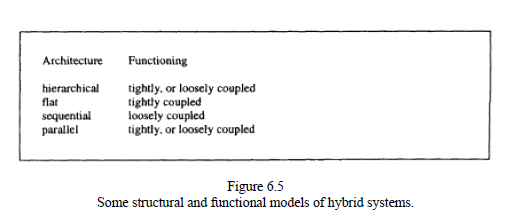SKEDSOFT
Introduction:-A hybrid system is a mixture of paradigms in the philosophical sense. In a technical sense, it is a mixture of methods and tools used in one system. There are three major modes of functioning in which different knowledge-engineering paradigms can be coupled:-
1. Loosely coupled: Different paradigms are applied separately, either in parallel, or, more typically, in a sequence, on different subtasks of the problem. For example, a neural network can be used for feature extraction and rule extraction, and a rule-based system for inference.
2. Tightly coupled: The paradigms are used in different subsystems, which work in a close "collaboration" to reach the solution; they communicate intensively and possibly frequently.
3. Blended at a low structural and functional level. Paradigms are mixed at a very low level so that they are not separable from a structural and functional point of view. For example, a neuron may have an activation function that is a membership function of a fuzzy set. Both paradigms are embodied structurally into "one body" and are functionally indistinguishable. Examples of such systems are fuzzy neural networks and connectionist production systems.
Loosely and tightly coupled systems are multimodular. The modules can be organized in different architectures: hierarchical vs. flat; sequential vs. parallel; or a combination of the both.
Different combinations between architectures and modes of functioning are possible in a hybrid system, as illustrated in figure For example, in a sequential hybrid system a connectionist system may be used for preprocessing or initial processing of raw data, and a symbolic rule-based system used to suggest a solution.

Loosely and tightly coupled hybrid systems, in their structural varieties, can be realized if the following steps are taken:
1. The whole task is first structured into modules connected with one another, for example, an output from one module is an input to another. Recurrent connections are allowed.
2. The input variables and the output variables for each of the modules are defined.
3. The solution procedure for each of the modules is defined as a symbolic Al solution (e.g., production rules), as a neural network, to be trained with data, as a set of fuzzy rules with an inference mechanism, or by using some other method.
4. The whole system is assembled in a way to be controlled by either a global control (external control), or by the flow of data (internal, self-control).